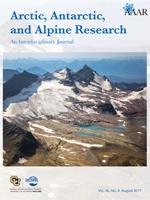BioOne.org will be down briefly for maintenance on 14 May 2025 between 18:00-22:00 Pacific Time US. We apologize for any inconvenience.

No abstract available
No abstract available
Diurnal to Decadal Changes in the Balance between Vegetation and Bare Ground in Tasmanian Fjaeldmark
No abstract available
